Source: Lei Technology

Image Source: Generated by Wujie AI
To be honest, Xiao Lei has never paid much attention to the Weibo Night, but in the past two days, he couldn't help but be attracted, not because of any celebrity or influencer, but because OPPO, as a partner of Weibo Night, conducted a round of promotion, showcasing some sample images using generative AI technology to remove certain objects from photos.
For example, in this photo of Xin Zhilei (portraying Li Li in "Blooming Flowers") holding the Find X7 Ultra, AI automatically removed the right arm and the obstruction in the lower left corner.
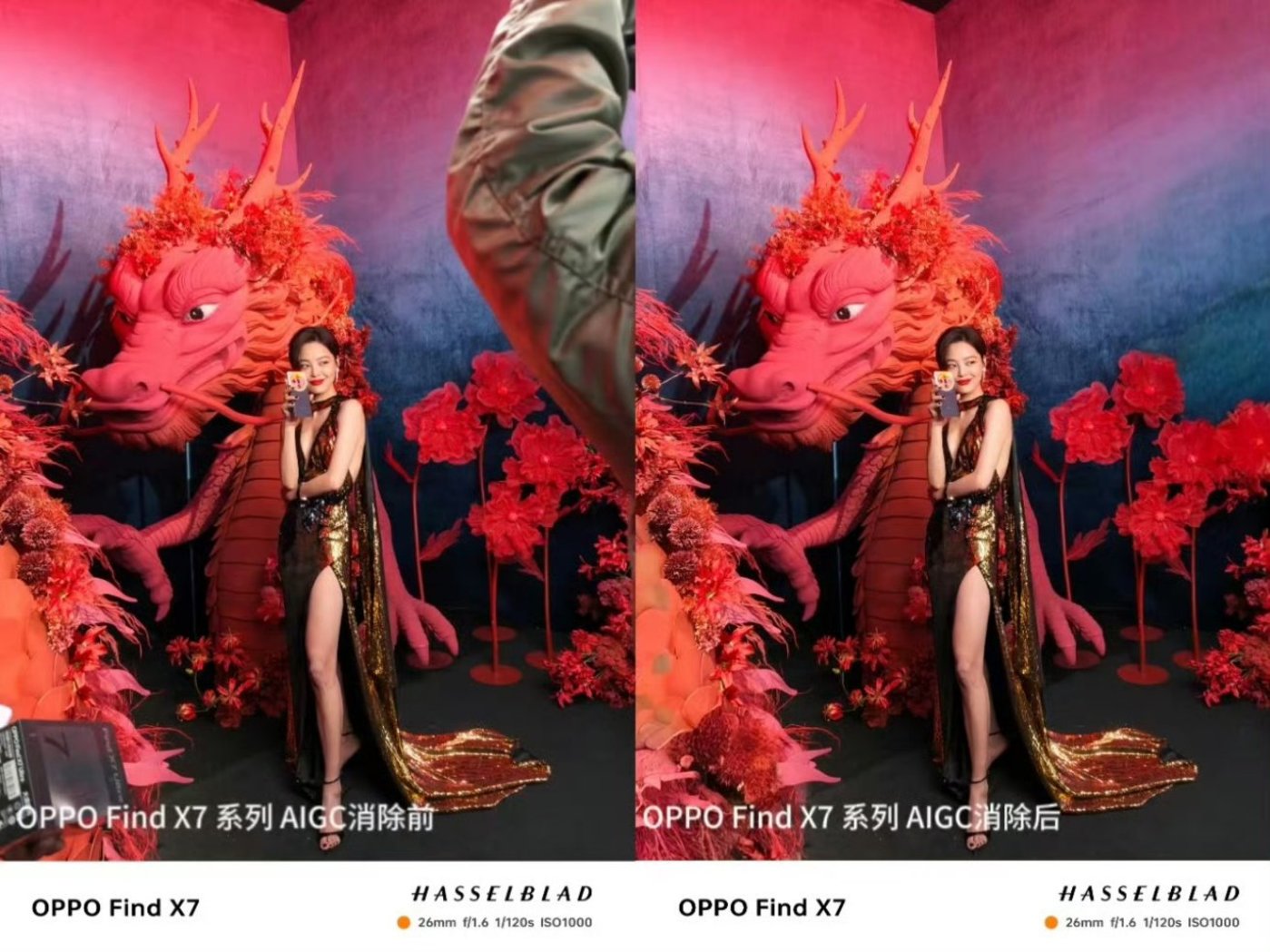
Image/ OPPO
Similarly, in this photo that has already spread with a "digital bagging" version, the left photography light was also removed using AI, while retaining the model and the lighting atmosphere.
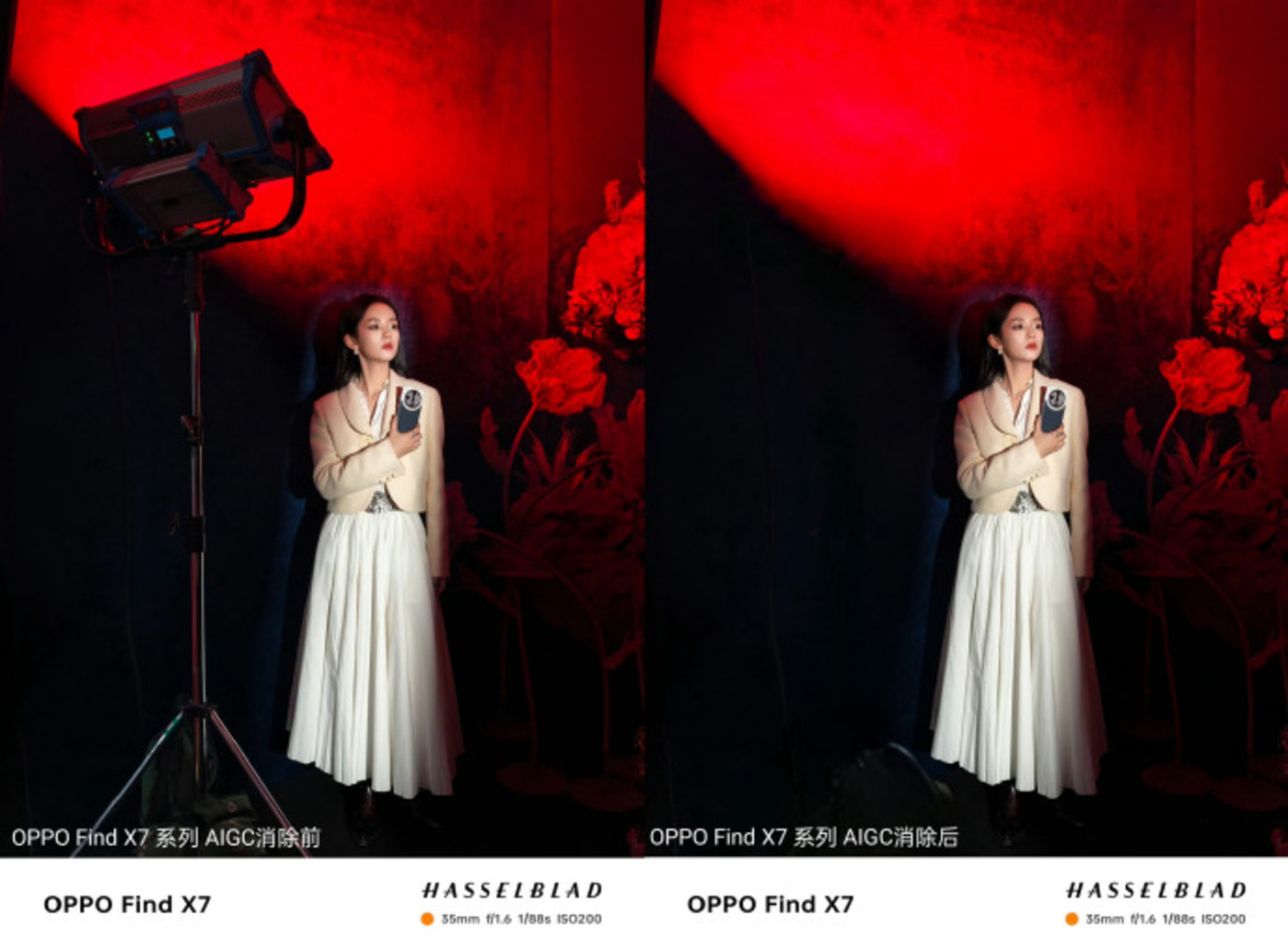
Image/ OPPO
Furthermore, in this photo, the excess people on the side were removed using AI, preserving the subject and the background.
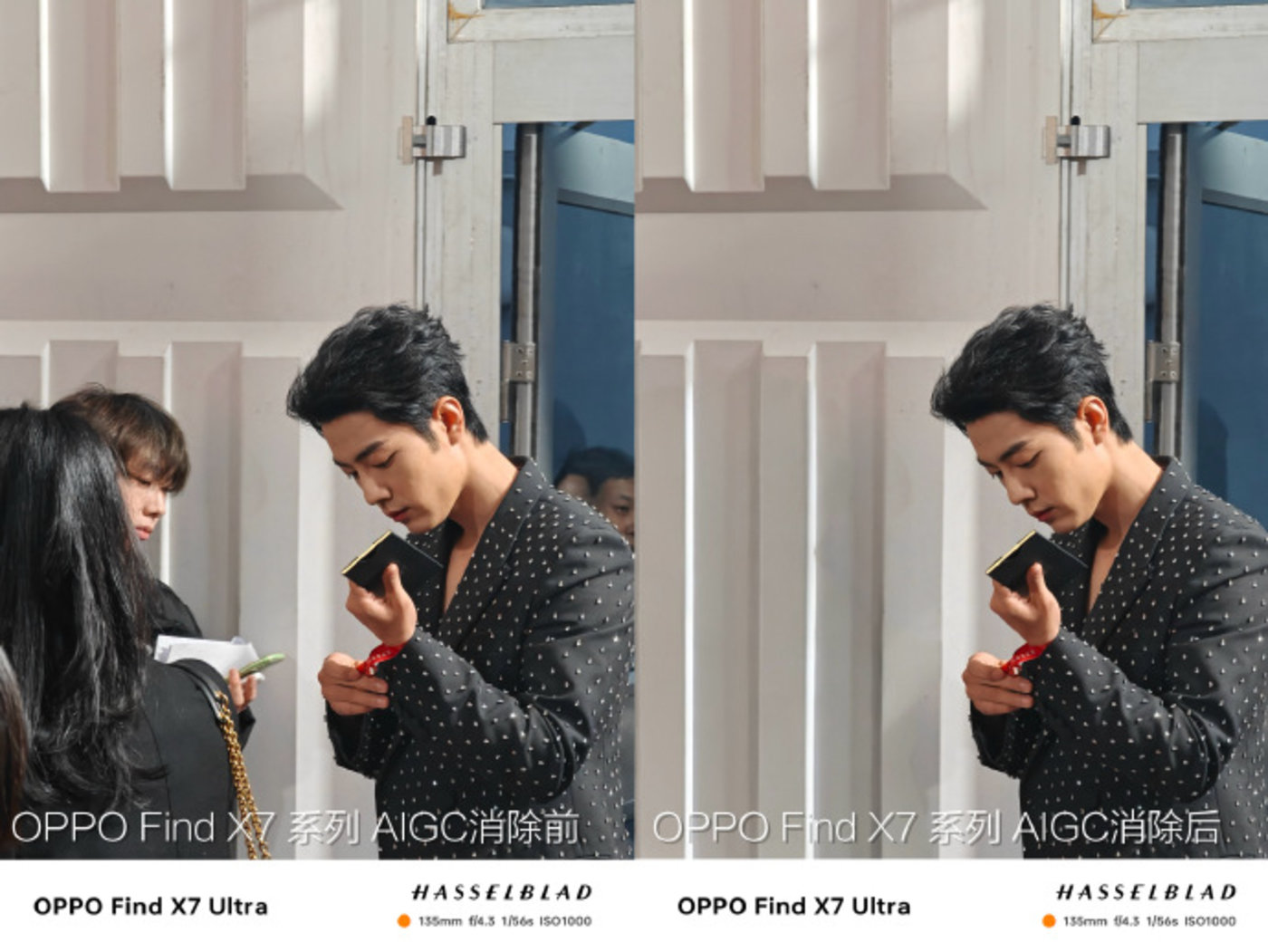
Image/ OPPO
In the early morning of the 14th, Weibo CEO Wang Gaofei (@来去之间) also reposted a Weibo from OPPO China's President Liu Bo, and one of the photos was included.
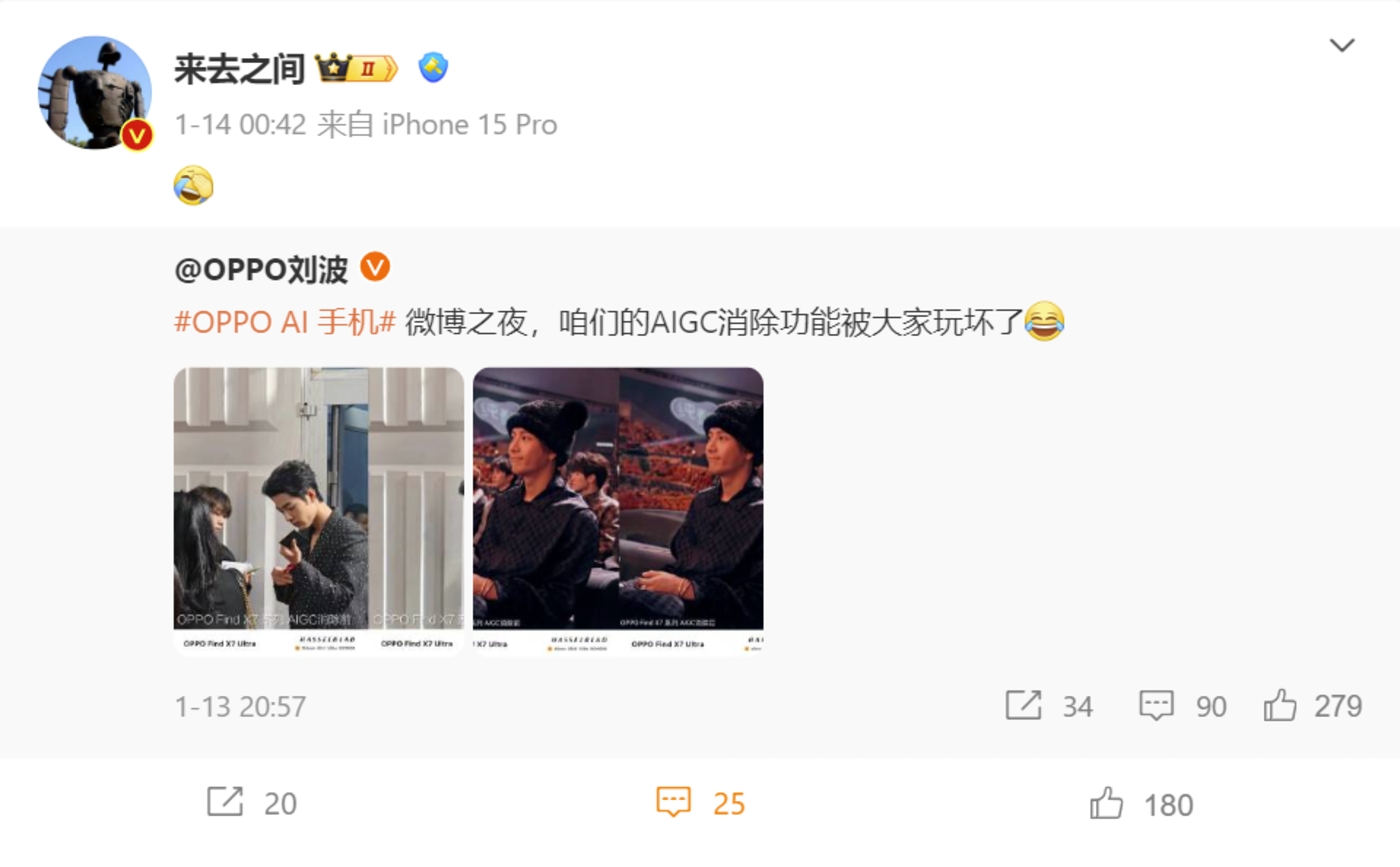
Image/Weibo
The AI removal function is actually not surprising at all. In 2021 or even earlier, manufacturers such as Huawei, Google, and Xiaomi saw many users' photos in their phones being "wasted" due to various obstructions, and subsequently introduced AI removal functions. Google's "Magic Eraser" and Xiaomi's "Magic Road Person Removal" have also sparked discussions online.

Magic Eraser (Google Photos), Image/Google
However, it must be said that compared to the effects and capabilities of AI removal three or four years ago, today's AI level has clearly improved significantly. Take the sample images released by OPPO, at first glance, there are almost no traces of photo editing.
But does Xiao Lei want to praise OPPO? Not really.
Because it's not just OPPO that has made progress. With the latest generative AI technology, the AI removal capabilities of companies such as Google and Xiaomi have also undergone qualitative changes.
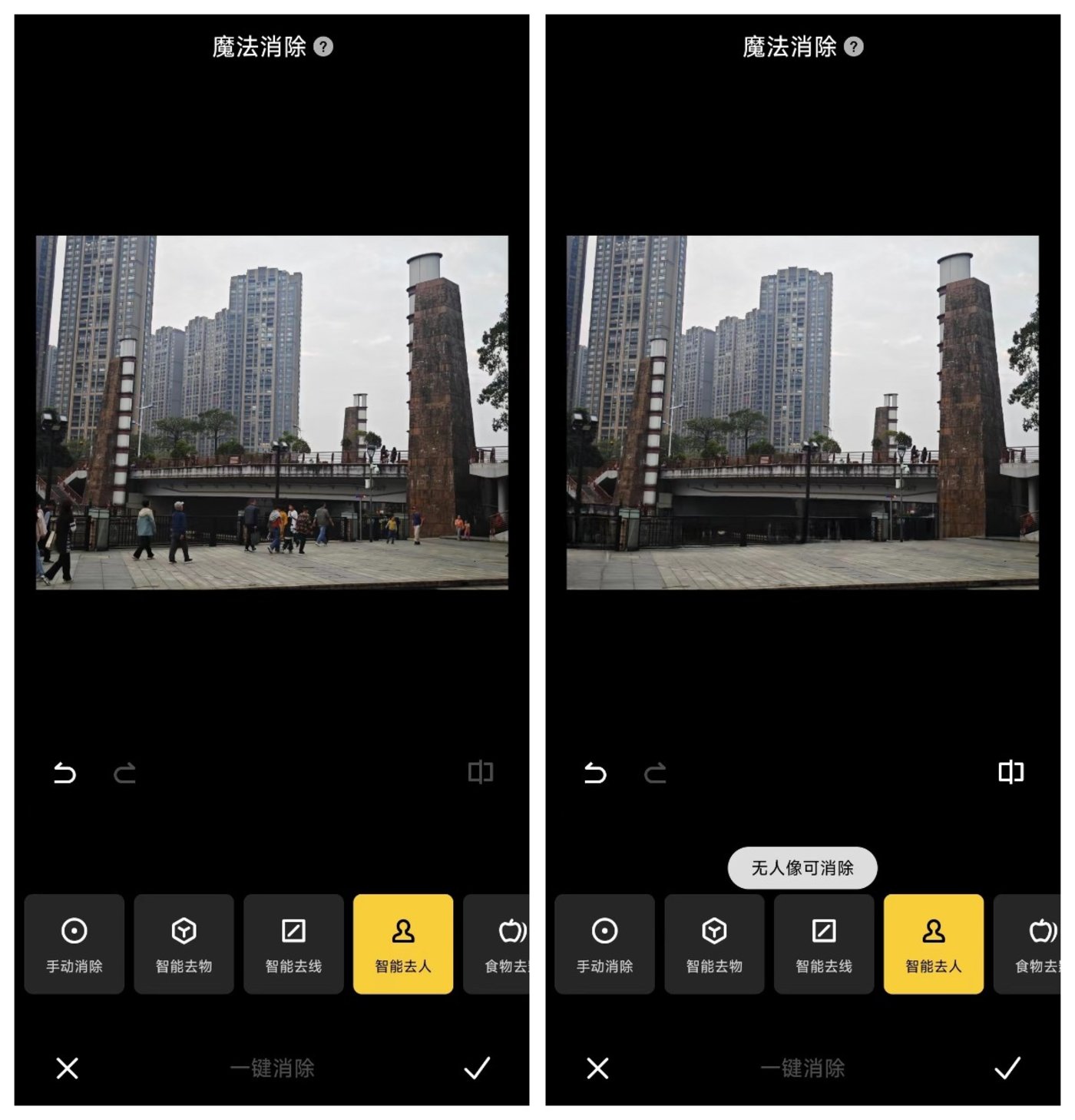
Image/Lei Technology
For example, this morning, Xiao Lei took this photo with the Xiaomi 13, which had many pedestrians in the frame. Through the AI automatic removal function on Pionex OS, it also achieved a good result.
Of course, generative AI brings more than just the function of automatically removing "obstacles" from photos. From a broader perspective, with the leap in AI's understanding of language and images, we may see in the next few years a new wave of AI completely changing the public's understanding of mobile phone imaging, and even the development path of smartphone products themselves.
From Computational Photography to AI Computational Photography
Digital enthusiasts should still remember Huawei's "Moon Mode" from a few years ago.
Initially, Huawei claimed that the P30 Pro could take clear photos of the moon, and the first batch of users also "discovered" that the "moon" photos taken by the P30 Pro were indeed very clear.
However, some media quickly found in experiments that the P30 Pro produced many moon details that did not exist, questioning that Huawei simply added moon details directly, which could not fully represent its algorithm and imaging capabilities.
The truth of the matter is not complicated. Many tests found that the P30 Pro did indeed have "photo editing" situations in moon mode. Besides the "Moon Mode" incident itself, the event also sparked a lot of discussion about the "reasonable scope of computational photography," with countless photography enthusiasts and ordinary mobile photography users expressing their opinions.
But looking back today, people's imagination of computational photography was still too limited at that time.
In 2022, when AI painting was just gaining popularity, some people on the internet were already worried or jokingly saying: AI is going to take over, and artists and photographers will have to step down.
By 2023, the AI-generated photo "Electrician" had won the championship at the Sony World Photography Awards, and another AI painting work "Space Opera House" also won the first prize in the "Digital Art" category at the Corona State Fair in the United States.
Not only in various award selections, AI also began to substantially impact the creative market, affecting the work and lives of a large number of low- to mid-level creators.
As of now, DALL·E has already been updated to the third version, and Midjourney has also been upgraded to V6. The image quality generated by these two major image models has improved significantly compared to the beginning of the year.
This kind of change was destined to change the way of mobile photography from the beginning. From AI redraw (such as AI Anime: redrawing photos in anime style) to AI enlargement, and then to AI removal, smartphone manufacturers are also destined to restructure photo functions and even rethink the future development path of mobile imaging.
Transforming Mobile Imaging with Large Models
In July, after releasing 7 AI tools based on its visual large model—Qixiang Intelligence, Meitu quickly launched the "AI Removal" function on Meitu Xiuxiu. Based on generative AI technology, users can automatically remove unwanted elements from photos by "selecting" or "smudging."
In October, Google announced that the Pixel 8 Pro, equipped with the Tensor G3 chip, will support offline operation of the "Magic Eraser," achieving better object removal through on-device large model computation inference based on image generation rather than background integration.
At the end of the same month, Xiaomi announced in a community post for Pionex OS testing that the "Xiaomi AI Editing" function would initially apply large models, including intelligent enlargement and Magic Eraser Pro, the former can expand and automatically compose poorly composed photos, and the latter can seamlessly remove passersby in tourist photos.
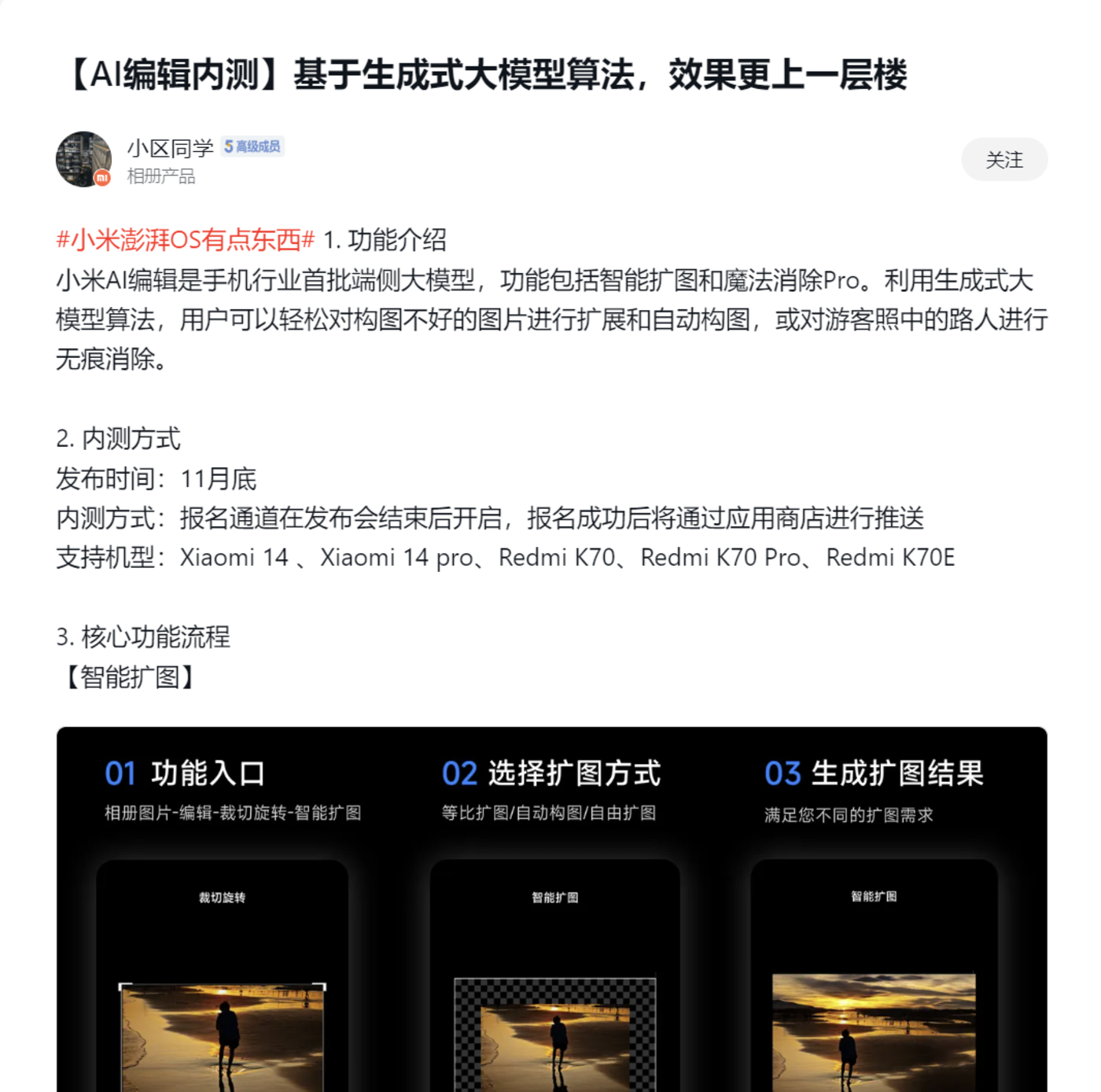
Image/Xiaomi Community
After that, we also saw the release of the vivo X100 series and the OPPO Find X7 series, both of which achieved AI removal functions through large model technology.
Certainly, even in the latest sample images released by OPPO, you can find that AI removal based on large models is not perfect. For example, in this set of sample images of the same scene, the feet of the background wall dolls were "guessed wrong" by the large model.
After all, the underlying logic of generative AI is based on speculation of various information, and of course, there will be cases of incorrect speculation. But it is fair to say that the effect and applicability of AI removal (based on large models) have undoubtedly made great strides in progress.
Moreover, not only in post-editing, the Pixel 8 Pro has a model built-in specifically for image processing, which can generate clearer details for images after enlargement in the gallery.
Furthermore, we can imagine establishing exclusive portrait models on mobile phones.
As possibly the first native AI tool to break the mold in China, although the popularity of Miao Ya Camera has long since faded, it still has great reference value. It is well known that before generating AI portraits, Miao Ya Camera requires users to upload more than 20 real-life photos to generate an exclusive portrait model.

The key is not the portrait, but the real-life model, Image/Miao Ya Camera
Compared to the privacy concerns caused by Miao Ya Camera's cloud-based establishment of portrait models, using on-device large models on mobile phones is undoubtedly a better choice. After establishing a personal portrait model, users can not only generate portraits but also simulate travel photos from different places or for other purposes.
Furthermore, generative AI technology is poised to change not only mobile imaging but also other aspects.
Rethinking Smartphones with Large Models
At the Spring Peak Summit in 2023, DingTalk announced full access to the Qianwen large model, aiming to solve all problems with a single "/". At the time, DingTalk President Ye Jun openly admitted that DingTalk's products were very bloated, but intelligence provided an opportunity to achieve overtaking on the curve.
Jinshan Office CEO Zhang Qingyuan also said that Office has always been very complex, and the learning cost of many functions is very high, but AI can significantly reduce the usage threshold.
Whether it's DingTalk or WPS, they have actually seen the revolution in human-computer interaction brought about by generative AI's "intelligent emergence." All past, present, and future developed functions will at least not become learning thresholds and burdens for users at the graphical interaction level.
Smartphones are no different.
It is often said that smartphones are very "user-friendly," but in reality, many smartphones are not particularly user-friendly for middle-aged and elderly users, let alone for people with disabilities. Especially in domestic mobile phone systems, manufacturers have developed a large number of functions for users, but the hierarchical levels of many functions are too deep or the usage methods are too complex, often not benefiting users.
At least in the latest versions of Huawei, OPPO, and Xiaomi systems, we have seen manufacturers fully capable of making the AI assistant a truly "user-friendly assistant" through extensive data training and the invocation of system-level interfaces and permissions. Undoubtedly, this is a good thing for both ordinary users and for the elderly and disabled people who are not familiar with using smartphones.
But this is only the tip of the iceberg brought about by large models. In 2024, all smartphone manufacturers need to prove to users that the experience upgrade brought about by AI integration into hardware, as OPPO's Chief Product Officer Liu Zuohu said, is actually an unprecedented capability, and smartphone manufacturers need to make good use of this capability to serve users well.
免责声明:本文章仅代表作者个人观点,不代表本平台的立场和观点。本文章仅供信息分享,不构成对任何人的任何投资建议。用户与作者之间的任何争议,与本平台无关。如网页中刊载的文章或图片涉及侵权,请提供相关的权利证明和身份证明发送邮件到support@aicoin.com,本平台相关工作人员将会进行核查。




